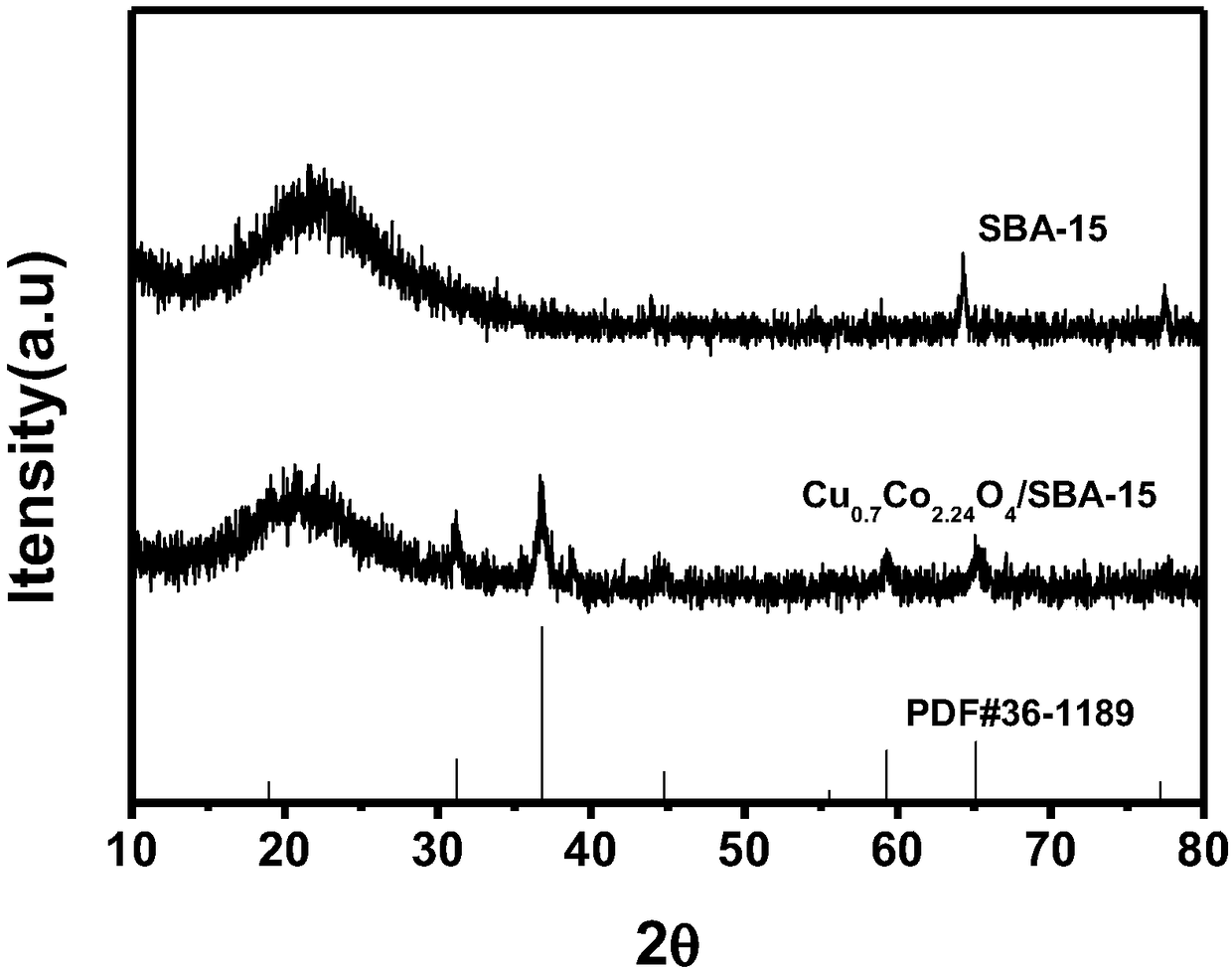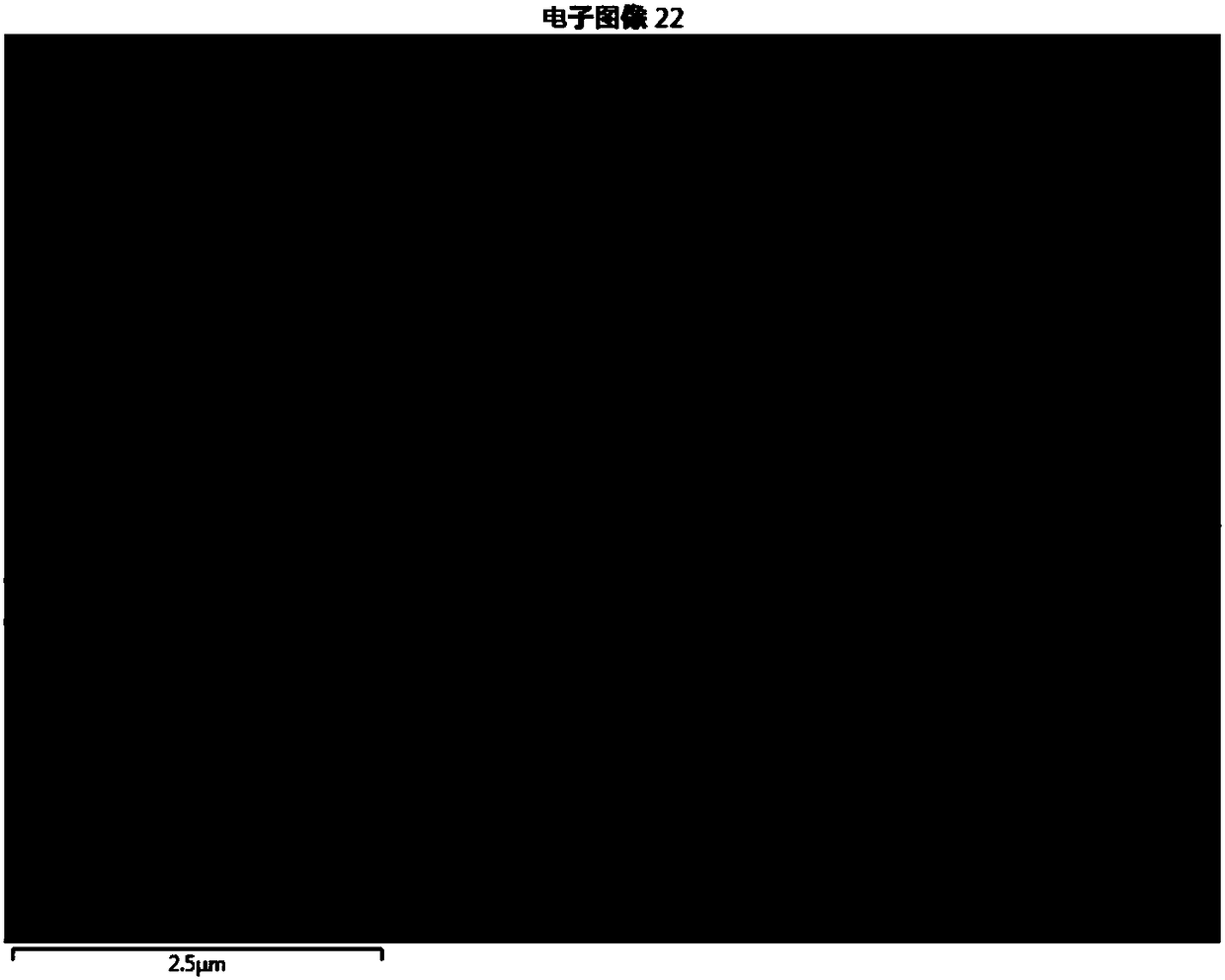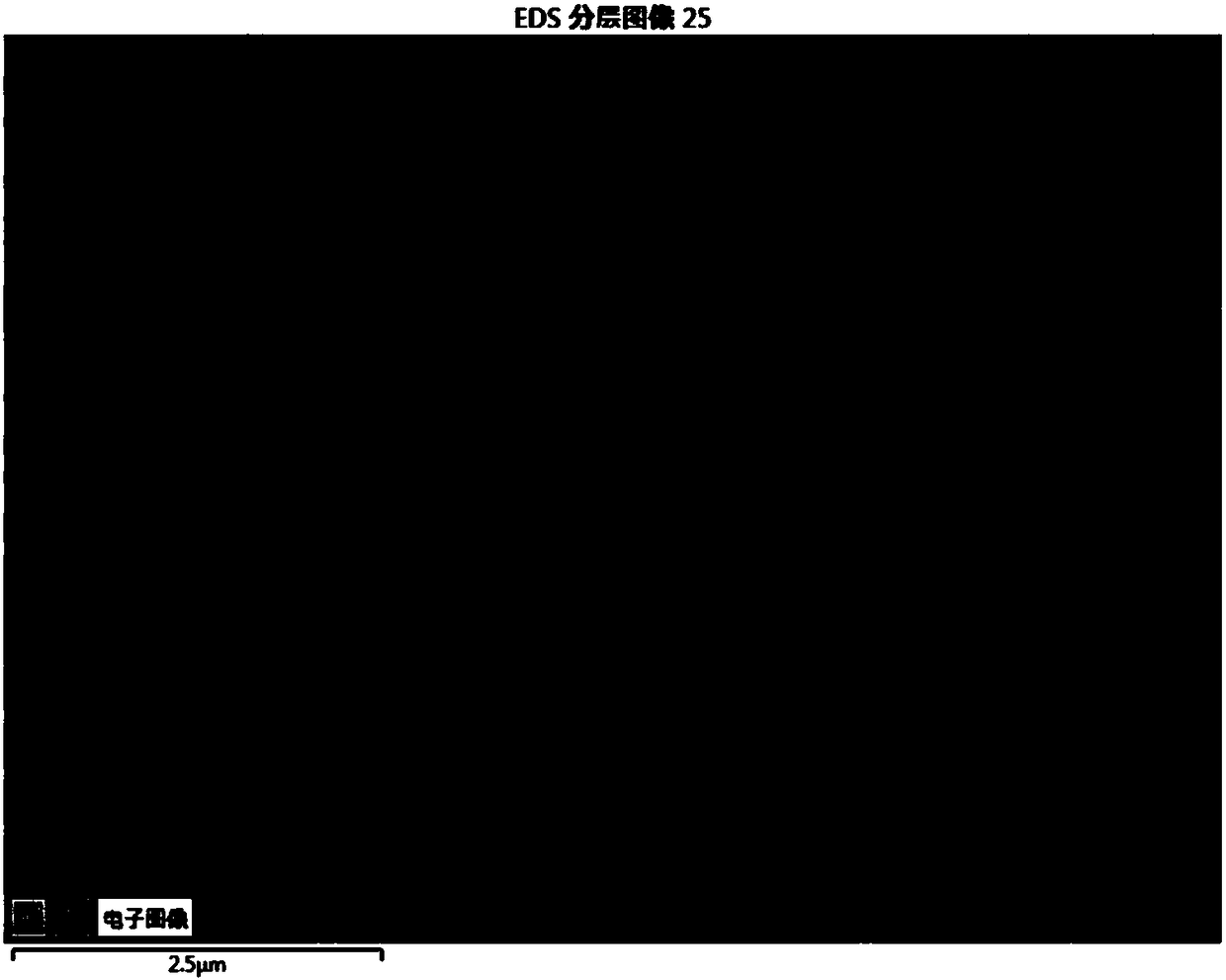Method for catalyzing monopersulfate to generate sulfate radicals to decompose organic matter
A technology for refractory organics and persulfate, applied in chemical instruments and methods, molecular sieve catalysts, chemical/physical processes, etc., to achieve uniform dispersion, high feasibility and wide pH range.
- Summary
- Abstract
- Description
- Claims
- Application Information
AI Technical Summary
Problems solved by technology
Method used
Image
Examples
Embodiment 1
[0041] A method for catalyzing monopersulfate to produce sulfate radicals to degrade organic matter, comprising the following steps:
[0042] A. Preparation of Cu 0.7 co 2.24 o 4 / SBA-15 catalyst
[0043] a. Accurately weigh 0.4938gCo(NO 3 ) 2 ·6H 2 O and 0.1543gCu(NO 3 ) 2 ·3H 2 O in a 100mL beaker, ultrasonically dissolved with 40mL triple distilled water, then added 1.0000g SBA-15 molecular sieve ultrasonically dissolved for 30min;
[0044] b. Place the mixed solution after ultrasonic dissolution in step a in a magnetic stirrer and stir and evaporate until there is no obvious water in the mixed solution, wherein the stirring temperature of the magnetic stirrer is 60°C;
[0045] c. drying the magnetically stirred mixture in step b at 100° C. for 12 hours to obtain a molecular sieve mixture;
[0046] d, the molecular sieve mixture prepared in step c is placed in a tube furnace for roasting, wherein the heating rate of the tube furnace is 2° / min, and the temperature ...
PUM
| Property | Measurement | Unit |
|---|---|---|
| clearance rate | aaaaa | aaaaa |
| clearance rate | aaaaa | aaaaa |
Abstract
Description
Claims
Application Information
 Login to View More
Login to View More - R&D
- Intellectual Property
- Life Sciences
- Materials
- Tech Scout
- Unparalleled Data Quality
- Higher Quality Content
- 60% Fewer Hallucinations
Browse by: Latest US Patents, China's latest patents, Technical Efficacy Thesaurus, Application Domain, Technology Topic, Popular Technical Reports.
© 2025 PatSnap. All rights reserved.Legal|Privacy policy|Modern Slavery Act Transparency Statement|Sitemap|About US| Contact US: help@patsnap.com



